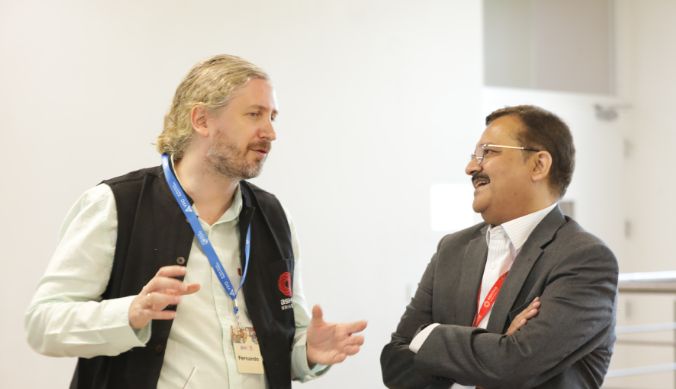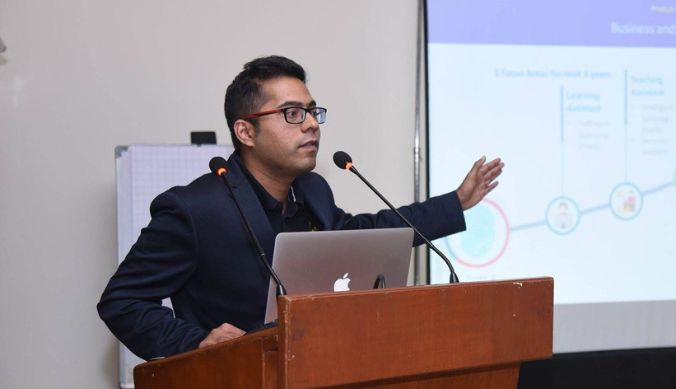Making safer emergency hospitals during COVID-19: An interview with Professor LS Shashidhara
In this interview, Prof. Shashidhara talks about how the idea of making safer emergency hospital first emerged and how these hospitals can cater to a large number of patients at the same time with the fewer nursing staff.

Office of PR & Communications
28 April, 2020 | 8 min readThe Coronavirus (hereafter COVID-19) pandemic has brought the whole world to a standstill, sending the global economy crashing and even major economies staring at recession. While the world waits for a vaccine to be produced and then made easily accessible, there is a significant paucity of available hospital beds for virus-infected patients. In order to solve this problem, Professor Alan Short from the Department of Architecture, the University of Cambridge, and Professor Andrew Woods FRS of Cambridge’s BP Institute (BPI) collaborated with Professor LS Shashidhara, Dean of Research and Professor of Biology, Ashoka University to design COVID-19-specific makeshift wards (by converting large function halls into COVID-19 wards), with a focus on reducing the risks of infections between patients and between patients and healthcare staff.
In this interview, Prof. Shashidhara talks about how the idea first emerged and how these hospitals can cater to a large number of patients at the same time with fewer nursing staff.
1. Could you please elaborate on the making of these hospitals? When did this concept first emerge?
During my visit to Cambridge last year and over email, Prof Alan Short and I were discussing such wards to reduce the spread of hospital-borne infectious diseases. When the current pandemic started, we reinitiated our discussions. We started discussing so-called Nightingale wards good enough for Covid-19 patients given high infectious rate, the way it spreads and the fact that there is no drug and no vaccine. Alan brought Prof Andrew Woods into the discussions and they started simulating various ways the virus may spread and then started working on the design of wards that will have minimal spread of virus between the patients and between the patients and health givers. I contacted Mr. CS Raghuram, CR Narayan Rao (Consultant) Private Ltd., who designed the entire campus of IISER Pune. He provided necessary inputs such as plans of a typical functional hall in India and the air circulation patterns in summer and winters.
2. How do these makeshift wards reduce the risks of spreading infections?
The incoming fresh air is placed at the level of the head of the patient and air is blown from behind the patient in angle. The motorised exhaust is at the ceiling. The flow of fresh air is such that it flows in upward direction taking all viral particles out of the ward through the exhaust. Nothing remains in the air.
3. Are these hospitals easy to maintain?
Yes. Wards are made of simple washable fabric (they can be surface sanitised very easily). Post-pandemic, all material used for making the wards can be removed and reused for other purposes.
4. What do you think should be the approach right now towards COVID-19?
Now that every citizen is aware of the cause of the disease and how to prevent it coming to us (physical distancing, wearing masks, frequent hand wash/sanitisation et al), better to lift the lockdown and maintain all activities in such a way that crowding is avoided. We should make this new normal in our life.
5. The AIIMS Director has said that the number of cases is likely to peak in June-July. Your comment.
I also think so. We have slowed its spread by intense and prolonged lockdown. But, the virus is very much in the population. The spread will increase gradually and peak sometime in the coming two-three months.
The experts have designed a method to sub-divide large function halls of about 20000 SFT that are ubiquitous in India into make-shift wards for a minimum 100 patients each. The design note says, “The wards are constructed using lightweight materials such as modular partitions, polyethylene sheets erected in a tent like structure, a suspended ceiling linked with good air circulation system. Cleanability and ease of maintenance are important. The wards are insulated from each other to prevent cross flow of air between wards.
Some of the media outlets where the story has been featured are – Medical Express and Daily Telegraph in the UK, and The Indian Express and Outlook in India.
You can watch the video made by the University of Cambridge to understand more about these emergency hospitals here.













